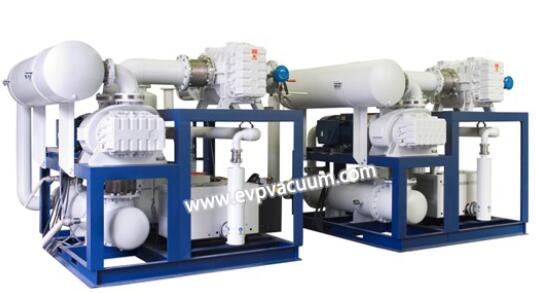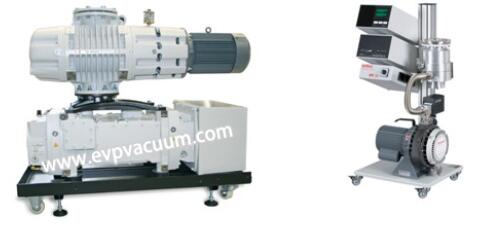Vacuum system for secondary degassing process of molten steel
Today, I’d like to introduce the vacuum pump system for the secondary degassing process of liquid steel. If you want to know about other application industries and processes, please click here.
Industrial application – industry is inseparable from the modern production process of vacuum technology. The vacuum system helps to make the production process cleaner, more intelligent, more economical and more environmentally friendly.
VD process is mainly used for alloy steel smelting; VOD process is mainly used for stainless steel smelting. VD process is mainly used to remove volatile atmosphere (such as hydrogen, oxygen, nitrogen, etc.) in liquid steel to enhance the properties of steel. In the VOD process, oxygen is injected to remove the easily oxidized components (such as carbon, phosphorus, etc.) in the molten steel.
Vacuum degassing – the vacuum system must deal with a large amount of dust generated by all the gas carrier and the condensation of the liquid steel after degassing. Generally, the pumping speed required is between 50000 m3 / h and 250000 m3 / h under degassing pressure (~ 0,67 mbar), and the evacuation time required is about 4-6 Min. because the liquid steel will be continuously cooled during degassing, it is very important to evacuate quickly. In order to avoid “slag overflow”, it is necessary to control the evacuation process.

The following is to introduce the composition of a complete vacuum system.
There are many kinds of vacuum application equipment, but no matter what kind of vacuum application equipment, there is a set of air extraction system to eliminate the gas in the evacuated container, so as to obtain the required vacuum conditions in the vacuum container. For example: a container for vacuum treatment is connected with a vacuum pump by pipes and valves. When the vacuum pump empties the container, there should be a vacuum measuring device on the container, which constitutes the simplest vacuum pumping system.
The vacuum system can only obtain the vacuum degree in the low vacuum range in the container to be pumped. When it needs to obtain the vacuum degree in the high vacuum range, a high vacuum pump is connected in series in the vacuum system. When a high vacuum pump is connected in series, valves are usually added at the inlet and outlet of the high vacuum pump, so that the high vacuum pump can maintain vacuum independently. If the high vacuum pump in series is an oil diffusion pump, in order to prevent a large amount of oil vapor from flowing back into the pumped vessel, a trap water-cooled baffle is usually added at the inlet of the oil diffusion pump. According to the requirements, dust catcher, gauge head of vacuum relay, vacuum soft connection pipeline, inlet vent valve of vacuum pump and so on can be added in the pipeline, thus forming a perfect high vacuum system.
In a vacuum system composed of more than two vacuum pumps in series, the pump pumping low vacuum is usually called the front pump (or booster pump) of the upper high vacuum pump, and the highest vacuum pump is called the main pump of the vacuum system, that is, it is the most important pump. The limit vacuum degree and working vacuum degree in the pumped container are determined by the main pump. The pipeline between the outlet of the pumped vessel and the inlet of the main pump is called high vacuum pipeline, and the valve at the inlet of the main pump is called main valve.
Usually, the former stage pump is also used as the pre vacuum pump. The pipeline between the pumped container and the pre pumping pump is called pre vacuum pipeline, and the valve on the pipeline is called pre vacuum pipeline valve. The pipeline from the main pump outlet to the inlet of the front stage pump is called the front stage pipeline, and the valve on the pipeline is called the front stage pipeline valve, while the flexible connection pipeline is set to isolate the vibration of the front stage pump.

Generally speaking, a perfect vacuum system consists of the following elements:
1. Pumping equipment: such as various vacuum pumps
2. Vacuum valve
3. Connecting pipes
4. Vacuum measuring device: such as vacuum pressure gauge, various regulators
5. Other components: such as catcher, dust collector, gauge head of vacuum relay, gas storage tank, etc.
So, what is the vacuum system? In a word, it is: the pumping system used to obtain the vacuum degree with specific requirements.
The basic content of vacuum system design: according to the vacuum degree requirements of the pumped vessel, select the appropriate vacuum system design scheme, calculate the selection and distribution of pumps; determine the pipe, valve, catcher, vacuum measuring elements, etc., make reasonable configuration, and finally draw the assembly drawing and parts drawing of the vacuum system.

